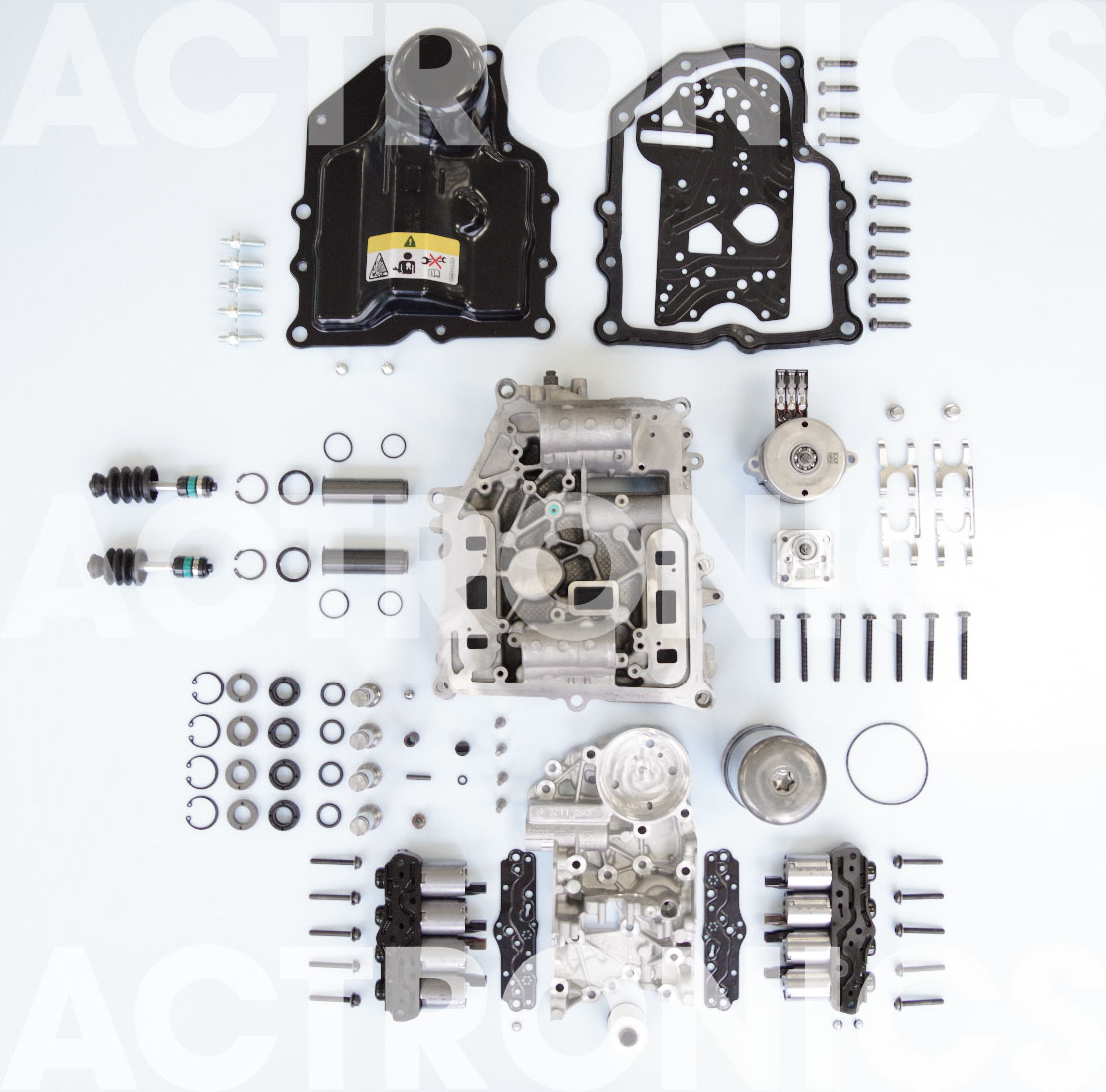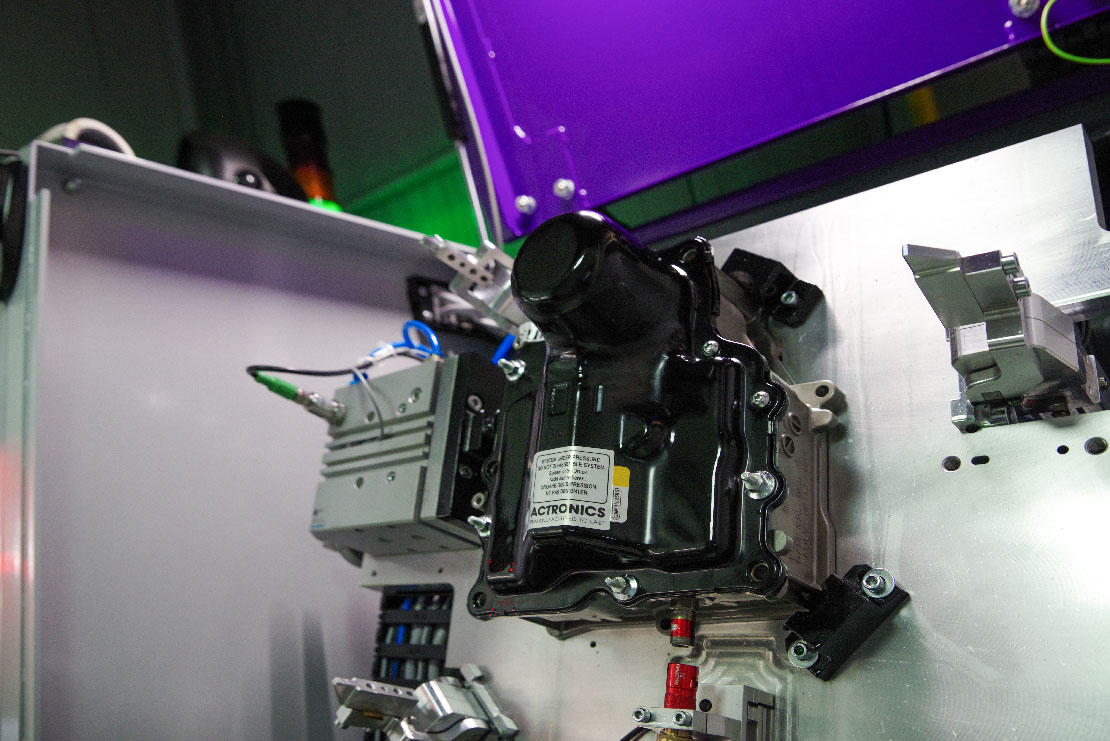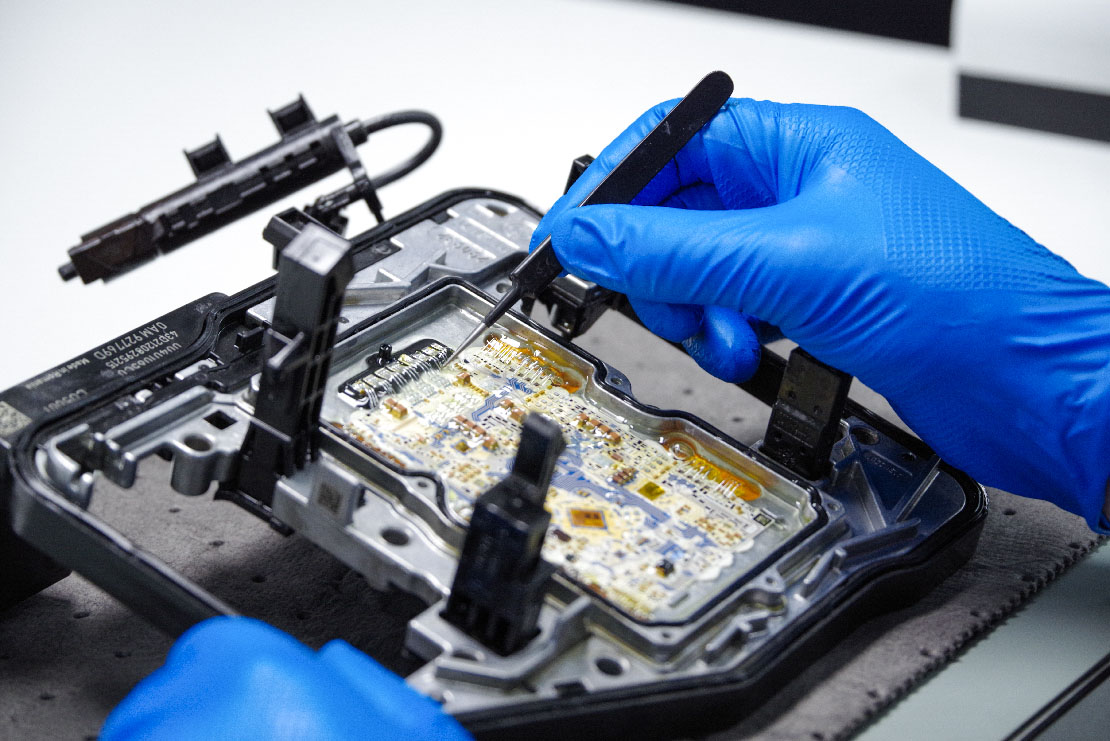New philosophy within ACTRONICS continues: DSG7 remanufacturing line completed
After the successful launch of the remanufacturing lines for ABS systems and instrument clusters, it is now the turn of a TCU: the DSG7. This is already the third remanufacturing line that is being put into use at ACTRONICS. The new way of remanufacturing convincingly meets all expectations, which is why this quality philosophy is continued with confidence.
The DSG7 process in detail
The new remanufacturing line for the DSG7 mechatronic is slightly different from the remanufacturing lines for ABS systems and instrument clusters. In order to ensure that the remanufacturing process for the DSG7 mechatronic runs as efficiently as possible, this remanufacturing line has been divided into several sub-lines: a test and control line for all incoming customer units, a line where the remanufacturing of the HCU ( the hydraulic part with valves) is carried out as a continuous process and a line where the remanufacturing of the TCU (the computer) is carried out. This split offers the possibility to build up stock in advance. This not only makes the process much more efficient, but also ensures a shorter lead time: a defective HCU can be exchanged directly with a remanufactured one from stock.

A separate line for incoming customer units
The incoming customer unit line consists of a disassembly station, two advanced simulation platforms and an assembly station with end-of-line test. Upon entry, the TCU is separated from the DSG7 mechatronics. This allows both the TCU and the HCU to be tested separately, which offers many advantages compared to testing a complete unit.
Both simulation platforms aim to expose every anomaly, no matter how small. If a deviation is found in the TCU, it will go through the remanufacturing on the separate remanufacturing line specially set up for this. If a deviation is found in the HCU, it can be exchanged straight away with a remanufactured HCU from stock.
The remanufacturing process on this line is completed with the final assembly and the end-of-line test. Even though both the TCU and the HCU are remanufactured and tested separately, after assembly we want to be absolutely sure that the assembled unit functions perfectly. Nice detail: during testing (fully automatic) video recordings are also made. These images serve as an additional means of checking.

The remanufacturing line for HCUs
The new remanufacturing line for the HCU of the DSG7 mechatronic bears many similarities to the modern automatic processes encountered in the manufacture of new automotive parts. The remanufacturing process is divided into several simple steps. Each step has its own station with its own adapters and its own tooling and where full automation is possible, this is applied. The other steps are extensively guided by software, instructions and warning systems.
The remanufacturing line for HCUs roughly consists of three processes: the first process in which a used HCU is dismantled down to the smallest detail, the second process in which all good parts are extensively tested and treated (cleaning, blasting, coating, etc.) and finally the third process in which a HCU is completely rebuilt from treated and new parts. All these activities are continuous, so that new stock can be built up with a constant flow. This means that remanufactured HCUs are always available as soon as a customer's HCU turns out to be defective.

The remanufacturing line for TCUs
If you're looking for something impressive, you could find it on the TCU remanufacturing line. Here you can still find stations where it is possible to solder manually. But that's actually where the comparison with the old remanufacturing method ends. Depending on the defects found during the entry test, the software shows exactly what needs to be done on the TCU. With the pre-set microscopes, the TCU placed in an adapter can be checked down to the smallest detail. In the final test, all functions are then tested fully automatically. If a TCU can no longer be saved, it is also possible to transfer the software to a freshly remanufactured TCU of the same type. All in all, the remanufacturing of a TCU is therefore a very extensive process and it hardly resembles how the remanufacturing was carried out before.
Fully operative
The new remanufacturing line has now been officially put into use. All stations, equipment and tooling function properly and all steps in the process are completed as expected. Stock building is therefore progressing well. We are already seeing the positive effect on the average lead time. The fact that this effect will only increase in the short term is, of course, a good prospect.

 da
da de
de es
es fr
fr it
it nb
nb nl
nl pt
pt sv
sv fi
fi